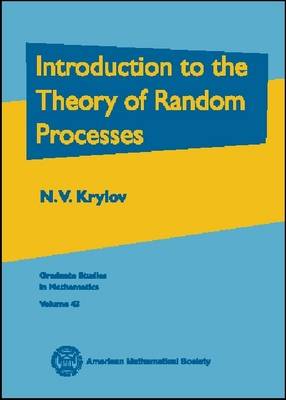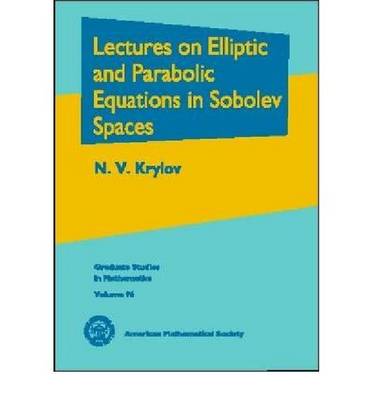Graduate Studies in Mathematics
2 total works
This book concentrates on some general facts and ideas of the theory of stochastic processes. The topics include the Wiener process, stationary processes, infinitely divisible processes, and Ito stochastic equations. Basics of discrete time martingales are also presented and then used in one way or another throughout the book. Another common feature of the main body of the book is using stochastic integration with respect to random orthogonal measures. In particular, it is used for spectral representation of trajectories of stationary processes and for proving that Gaussian stationary processes with rational spectral densities are components of solutions to stochastic equations.In the case of infinitely divisible processes, stochastic integration allows for obtaining a representation of trajectories through jump measures. The Ito stochastic integral is also introduced as a particular case of stochastic integrals with respect to random orthogonal measures. Although it is not possible to cover even a noticeable portion of the topics listed above in a short book, it is hoped that after having followed the material presented here, the reader will have acquired a good understanding of what kind of results are available and what kind of techniques are used to obtain them. With more than 100 problems included, the book can serve as a text for an introductory course on stochastic processes or for independent study. Other works by this author published by the AMS include, ""Lectures on Elliptic and Parabolic Equations in Holder Spaces"" and ""Introduction to the Theory of Diffusion Processes"".
Lectures on Elliptic and Parabolic Equations in Sobolev Spaces
by N. V. Krylov
Published 15 November 2008
This book concentrates on the basic facts and ideas of the modern theory of linear elliptic and parabolic equations in Sobolev spaces. The main areas covered in this book are the first boundary-value problem for elliptic equations and the Cauchy problem for parabolic equations. In addition, other boundary-value problems such as the Neumann or oblique derivative problems are briefly covered. As is natural for a textbook, the main emphasis is on organizing well-known ideas in a self-contained exposition. Among the topics included that are not usually covered in a textbook are a relatively recent development concerning equations with $\textsf{VMO}$ coefficients and the study of parabolic equations with coefficients measurable only with respect to the time variable. There are numerous exercises which help the reader better understand the material. After going through the book, the reader will have a good understanding of results available in the modern theory of partial differential equations and the technique used to obtain them. Prerequesites are basics of measure theory, the theory of $L p$ spaces, and the Fourier transform.

